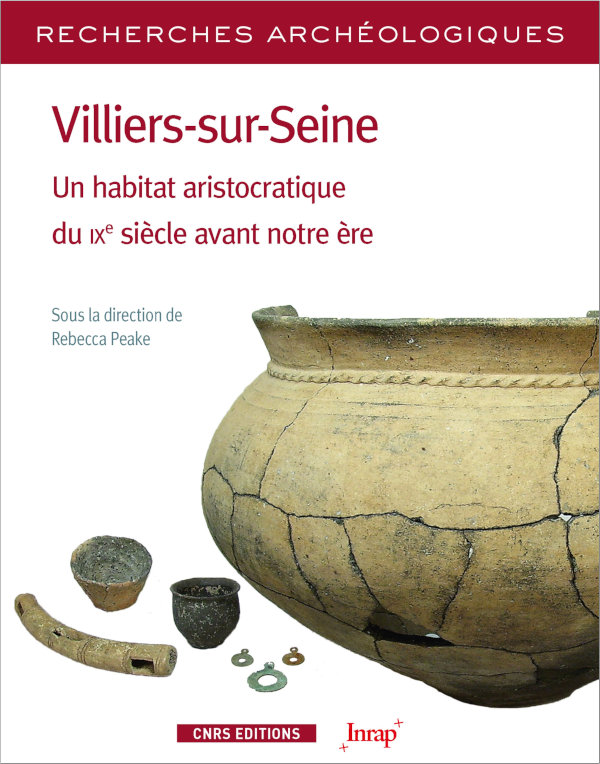You are here
Villiers-sur-Seine: An aristocratic habitat from the 9th century BC
The "Recherches archéologiques" collection publishes, for the scientific community, monographs and syntheses resulting from preventive archeology operations carried out by Inrap. These works are distinguished by the major character of the sites studied, their innovative aspect in methodological or scientific terms, or the size of the territory taken into account.
The known Bronze Age settlements between the Île-de-France and Champagne are usually small, unenclosed family farms. The Villiers-sur-Seine site, however, built in a visible and accessible location that enabled control of activities on the nearby river, is completely different: the two large buildings and their annexes were protected by a system of ditches and an ostentatious palisade. Though the Seine Valley was already anthropised at the end of the 9th century BC, this habitat seems to have had a significant impact on the nearby natural environment: development of agropastoral activities due to the extension of wet meadows, episodes of land clearing for construction, cultivation of various plant species whose production required intensive agriculture, and the hunting of large game. To these aspects of high social status can be added exceptional undertakings such as bronze metallurgy and the organisation of collective meals. Villiers-sur-Seine, therefore, was as much a hub of the local economy as it was a focal point for the surrounding populations.

Rebecca Peake is an Archaeological Research Officer at Inrap, a specialist in the Bronze Age and the Early Iron Age and a member of the UMR 6298 ARTEHIS.
Authors and contributors: Gisèle Allenet de Ribemont (Inrap, UMR 6566 "CReAAH"), Ginette Auxiette (Inrap, UMR 8215 "Trajectoires"), Christine Chaussé (Inrap, UMR 8591 "Laboratoire de Géographie Physique"), Sylvie Coubray (Inrap, UMR 7209 "Archéozoologie, Archéobotanique : Sociétés, Pratiques et Environnements'), Valérie Delattre (Inrap, UMR 6298 'ARTeHIS'), Nicolau Escanilla Artigas (ASOME-Universitat Autònoma de Barcelona), Lamys Hachem (Inrap, UMR 8215 'Trajectoires'), Caroline Hamon (CNRS, UMR 8215 "Trajectoires"), Yannick Ledigol (Dendrotech, UMR 6566 "CReAAH"), Chantal Leroyer (Ministère de la Culture, UMR 6566 "CReAAH"), Benoît Mille (C2RMF, UMR 7041 "Archéologies et Sciences de l'Antiquité"), Rebecca Peake (Inrap, UMR 6298 "ARTeHIS"), Jeanne Perrière (Ministry of National Education), Patrick Pihuit (Inrap), Delphine Minni (Inrap), Théophane Nicolas (Inrap, UMR 8215 "Trajectoires"), Pascal Ruby (University of Paris I, UMR 8215 "Trajectoires"), Françoise Toulemonde (UMR 7209, "Archéozoologie, Archéobotanique : Sociétés, Pratiques et Environnements"), Carlos Valero (Inrap), Cécile Véber (Inrap, UMR 7044 "Archimède").
Full text on HAL

Rebecca Peake (dir.). - Villiers-sur-Seine : Un habitat aristocratique du IXe siècle avant notre ère. Inrap. CNRS Éditions, 456 p., 2020, Recherches archéologiques 18, 978-2-271-13049-5. 〈hal-02552241〉.
- In bookstore
- On the website of CNRS Éditions
Catherine Chauveau
Cultural Development and Communication Department, Inrap
Phone: +33 1 40 08 81 44
catherine.chauveau [at] inrap.fr

